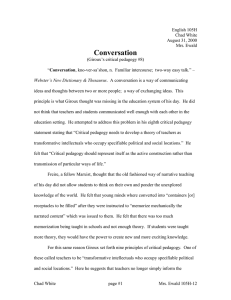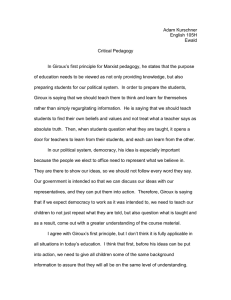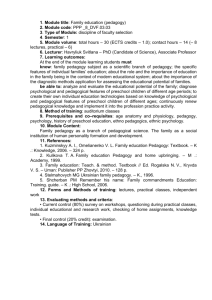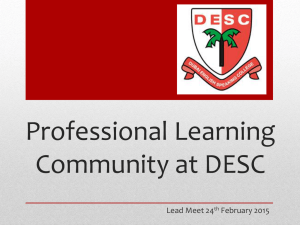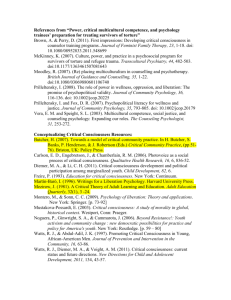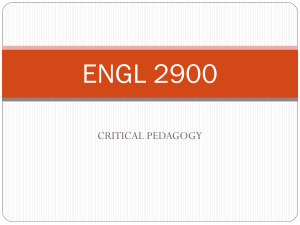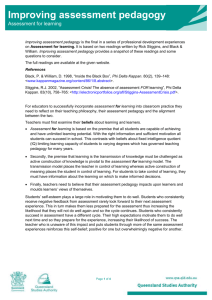Students, Teachers And Video Tapes. A Study Of Academic
advertisement
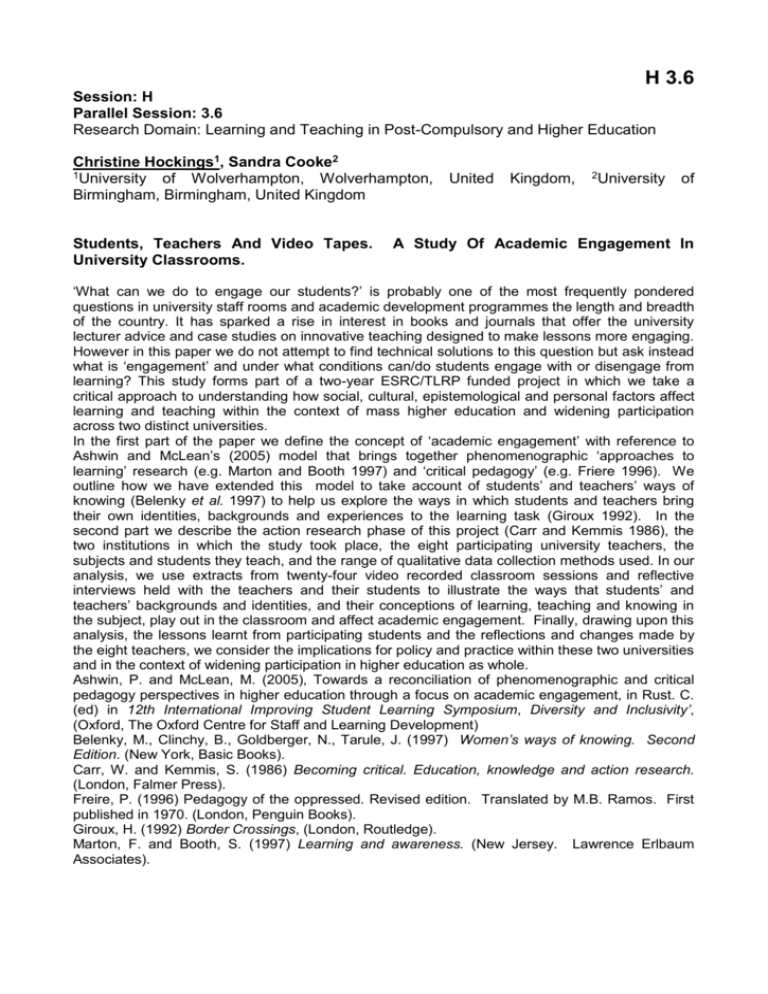
H 3.6 Session: H Parallel Session: 3.6 Research Domain: Learning and Teaching in Post-Compulsory and Higher Education Christine Hockings1, Sandra Cooke2 1University of Wolverhampton, Wolverhampton, Birmingham, Birmingham, United Kingdom Students, Teachers And Video Tapes. University Classrooms. United Kingdom, 2University of A Study Of Academic Engagement In ‘What can we do to engage our students?’ is probably one of the most frequently pondered questions in university staff rooms and academic development programmes the length and breadth of the country. It has sparked a rise in interest in books and journals that offer the university lecturer advice and case studies on innovative teaching designed to make lessons more engaging. However in this paper we do not attempt to find technical solutions to this question but ask instead what is ‘engagement’ and under what conditions can/do students engage with or disengage from learning? This study forms part of a two-year ESRC/TLRP funded project in which we take a critical approach to understanding how social, cultural, epistemological and personal factors affect learning and teaching within the context of mass higher education and widening participation across two distinct universities. In the first part of the paper we define the concept of ‘academic engagement’ with reference to Ashwin and McLean’s (2005) model that brings together phenomenographic ‘approaches to learning’ research (e.g. Marton and Booth 1997) and ‘critical pedagogy’ (e.g. Friere 1996). We outline how we have extended this model to take account of students’ and teachers’ ways of knowing (Belenky et al. 1997) to help us explore the ways in which students and teachers bring their own identities, backgrounds and experiences to the learning task (Giroux 1992). In the second part we describe the action research phase of this project (Carr and Kemmis 1986), the two institutions in which the study took place, the eight participating university teachers, the subjects and students they teach, and the range of qualitative data collection methods used. In our analysis, we use extracts from twenty-four video recorded classroom sessions and reflective interviews held with the teachers and their students to illustrate the ways that students’ and teachers’ backgrounds and identities, and their conceptions of learning, teaching and knowing in the subject, play out in the classroom and affect academic engagement. Finally, drawing upon this analysis, the lessons learnt from participating students and the reflections and changes made by the eight teachers, we consider the implications for policy and practice within these two universities and in the context of widening participation in higher education as whole. Ashwin, P. and McLean, M. (2005), Towards a reconciliation of phenomenographic and critical pedagogy perspectives in higher education through a focus on academic engagement, in Rust. C. (ed) in 12th International Improving Student Learning Symposium, Diversity and Inclusivity’, (Oxford, The Oxford Centre for Staff and Learning Development) Belenky, M., Clinchy, B., Goldberger, N., Tarule, J. (1997) Women’s ways of knowing. Second Edition. (New York, Basic Books). Carr, W. and Kemmis, S. (1986) Becoming critical. Education, knowledge and action research. (London, Falmer Press). Freire, P. (1996) Pedagogy of the oppressed. Revised edition. Translated by M.B. Ramos. First published in 1970. (London, Penguin Books). Giroux, H. (1992) Border Crossings, (London, Routledge). Marton, F. and Booth, S. (1997) Learning and awareness. (New Jersey. Lawrence Erlbaum Associates).
